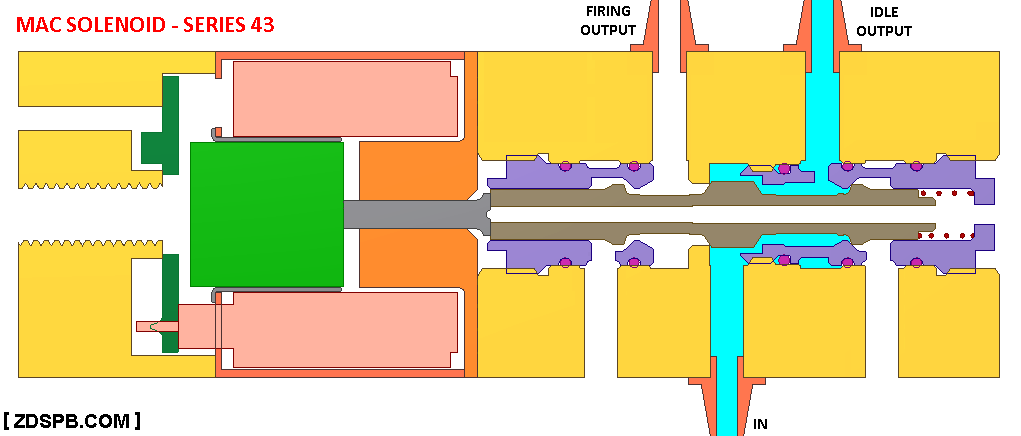I had a brainchild while showering the other day. After building a bunch of pneumags, the problem I always run into while trying to shoot fast is that finger-off-the trigger moment. I can walk decently fast, but inevitably I short stroke because I take two shots that are too close together. This usually results in a misfire, or a low FPS ball that gets stuck in the barrel and then shot in the back by the next ball, causing a barrel break.
It dawned on me then that the real problem is the on/off valve itself in the pneumag. When I'm holding down the trigger, the valve is on, providing constant pressure on the sear. When I let go, the valve releases pressure and allows the sear to reset. But if I press the trigger again too quickly, the pneumatics don't have time to vent properly (at least I'm assuming it's the pneumatics and not the Automag on/off, which recharges stupid fast).
So what if the valve itself was different? What if it provided a pulse of air instead of a constant stream?
This is the way a typical MSV on/off valve works inside a pneumag (at least to my limited understanding).

Air goes in one port, and when the pin is depressed, air is allowed to move through at constant pressure.
But what if the o-rings were moved into different places? Something like this?
In this configuration, only the air trapped between the two o-rings would move forward.
The main problem I see with this is that the sheer volume of air going into the piston would be minuscule, and it might not have enough power to actually move the piston at all. So the valve would either have to be larger or operate at much higher pressures. But I'm sure there are other problems too that I'm not seeing.
Any thoughts?



 Reply With Quote
Reply With Quote




 (Beswick!) I would try to make the volume adjustable in some fashion. You are kind of stuck with the pressure (~80 psi?). Once you get that functioning, step back and see how to integrate it and make it cheaper. Or, just stuff it all in a custom wood stock and play with it.
(Beswick!) I would try to make the volume adjustable in some fashion. You are kind of stuck with the pressure (~80 psi?). Once you get that functioning, step back and see how to integrate it and make it cheaper. Or, just stuff it all in a custom wood stock and play with it.


 Works great.
Works great.
